
Ely is a city in Saint Louis County, Minnesota, United States. The population was 3,460 at the 2010 census. It is located on the Vermilion Iron Range, and is historically home to several iron ore mines.

A steamboat is a boat that is propelled primarily by steam power, typically driving propellers or paddlewheels. Steamboats sometimes use the prefix designation SS, S.S. or S/S or PS ; however, these designations are most often used for steamships.

A scow is a type of flat-bottomed barge. Some scows are rigged as sailing scows. In the 19th and early 20th centuries, scows carried cargo in coastal waters and inland waterways, having an advantage for navigating shallow water or small harbours. Scows were in common use in the American Great Lakes and other parts of the U.S., in southern England, and in New Zealand. In Canada, scows have traditionally been used to transport cattle to the islands of New Brunswick's Saint John River. In modern times their main purpose is for recreation and racing.
Portable sawmills are sawmills small enough to be moved easily and set up in the field. They have existed for over 100 years but grew in popularity in the United States starting in the 1970s, when the 1973 oil crisis and the back-to-the-land movement had led to renewed interest in small woodlots and in self-sufficiency. Their popularity has grown exponentially since 1982, when the portable bandsaw mill was first commercialized.

A paddle steamer is a steamship or steamboat powered by a steam engine that drives paddle wheels to propel the craft through the water. In antiquity, paddle wheelers followed the development of poles, oars and sails, where the first uses were wheelers driven by animals or humans.

Alma is an 1891-built scow schooner, which is now preserved as a National Historic Landmark at the San Francisco Maritime National Historical Park in San Francisco, California.
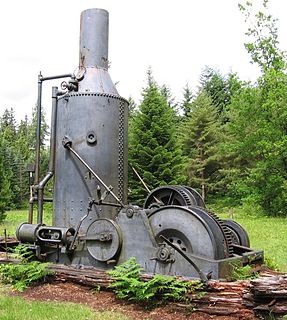
Steam donkey, or donkey engine, is the name for a steam-powered winch widely used in past logging, mining, maritime, and other industrial applications.
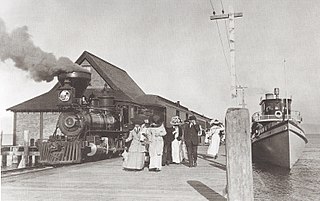
SS Tahoe was a steamship that operated on Lake Tahoe at the end of the 19th century and first half of the 20th. Scuttled in 1940, the wreck presently lies in 400 feet (120 m) of water off Glenbrook, Nevada. The wreck was first visited in 2002 by a team from New Millennium Dive Expeditions (NMDE) in a record-setting high-altitude dive for Lake Tahoe. As a result of the work that NMDE did on the Tahoe site from 1999 up to their dives in 2002, Tahoe became the first maritime site in Nevada to be listed in the National Register of Historic Places.

The St. Croix Boom Site is a historic and scenic wayside on the St. Croix River in Stillwater Township, Minnesota, United States. It commemorates the location of a critical log boom where, from 1856 to 1914, timber from upriver was sorted and stored before being dispatched to sawmills downstream. The site was developed as a roadside park along Minnesota State Highway 95 in the 1930s. In 1966 it was designated a National Historic Landmark for its national significance in the theme of industry. It was nominated for being the earliest, most important, and longest serving of the log storage and handling operations that supported Minnesota's major logging industry. Virtually no traces remain of the site's original buildings and structures.

Burntside Lodge is a resort on the southern shore of Burntside Lake in Morse Township, Minnesota, United States, outside the city of Ely. It has been in operation for over a century.
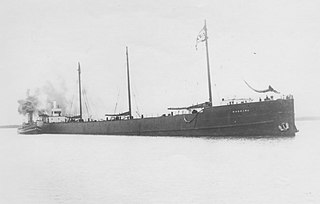
Madeira was a schooner barge that sank off the coast of Minnesota in Lake Superior on November 28, 1905. A schooner-barge is a type of ship that functions like a barge, in that it is towed by a steamship, but also has sails like a schooner. This type of ship evolved from wooden sailing ships that were cut down into barges and towed behind wooden steamships, a practice which originated in the late 1880s in coastal areas. This design was used in the Great Lakes for transporting grain, iron ore, and other products.
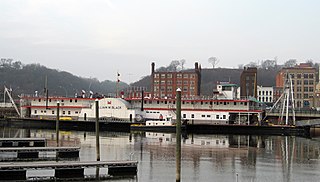
William M. Black is a steam-propelled, sidewheel dustpan dredge, now serving as a museum ship in the harbor of Dubuque, Iowa. Built in 1934, she is one of a small number of surviving steam-powered dredges, and one of four surviving United States Army Corps of Engineers dredges. She was declared a National Historic Landmark in 1992. She is open for tours as part of the National Mississippi River Museum & Aquarium.
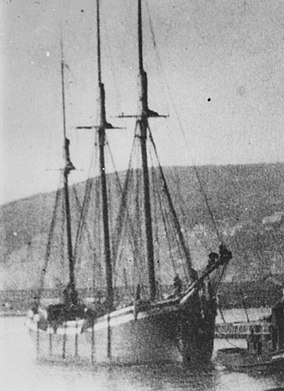
Samuel P. Ely is a shipwreck in Two Harbors, Minnesota listed on the National Register of Historic Places. She was a schooner that sailed the Great Lakes carrying iron ore, coal, and other bulk freight. She was built in 1869 and was a fairly typical example of the 200-foot schooner built in the 1870s, though she was reinforced for the demands of carrying iron ore.

The Albert Lammers House is a historic house in Stillwater, Minnesota, United States, built circa 1893. It was listed on the National Register of Historic Places in 1982 for having local significance in the themes of architecture and industry. It was nominated for its association with a local family that expanded Stillwater's lumber interests into northwest Minnesota, and as the city's leading example of Queen Anne architecture.
Alligator boats were a type of amphibious vehicle used in the forestry industry throughout Ontario, Quebec, the Maritime provinces of Canada and the northern United States from the mid-19th century to the beginning of the 20th century. These boats were so named because of their ability to travel between lakes by pulling themselves with a winch across land. Alligators served as "warping tug". They towed log booms across lakes and then portaged themselves using a winch to the next body of water. The rugged, steam-powered tugs were one of the pioneers in the mechanization of the forest industry in North America.
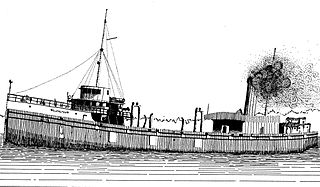
The Glenlyon was a freighter built in 1893; it was sunk off the shore of Isle Royale in Lake Superior in 1924 and the remains are still on the lake bottom. The wreck was placed on the National Register of Historic Places in 1984.

SS Robert Wallace was a wooden-hulled American bulk freighter that served on the Great Lakes of North America from her construction in 1882 to her sinking in 1902 on Lake Superior near the town of Palmers, St. Louis County, Minnesota, United States. On November 17, 1902 shortly after leaving Superior, Wisconsin with a cargo of iron ore, Robert Wallace sprang a leak and sank. Her wreck was found in 2006, and on October 14, 2009, the wreck of Robert Wallace was listed in the National Register of Historic Places.

The Niagara was a large wooden tugboat that sank on June 4, 1904 on Lake Superior near the town of Duluth, Minnesota, Lake County, Minnesota after running aground near Knife River. On April 14, 1994 the wreck of the Niagara was added to the National Register of Historic Places.
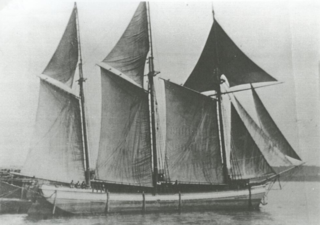
The Mayflower was a wooden hulled scow schooner that sank on June 2, 1891, in Lake Superior near Duluth, Minnesota, United States, after capsizing with a load of sandstone blocks. In 2012 the shipwreck site was added to the National Register of Historic Places.

SS S.C. Baldwin was a wooden hulled steam barge built in 1871, that capsized in a storm on August 26, 1908, on Lake Michigan, off Two Rivers, Wisconsin, United States, with the loss of one life. On August 22, 2016 the remnants of S.C. Baldwin were listed in the National Register of Historic Places as reference number 16000565.






















